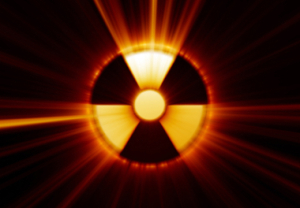by
Brendon Nafziger, DOTmed News Associate Editor | March 01, 2011
Cancer risks of low levels of radiation from computed tomography scans are poorly understood and that should be better communicated to the public, experts said at a meeting last week examining CT dosage risks.
Clinicians, medical physicists, radiologists and industry representatives gathered in Bethesda, Md. for "Toward the Sub-mSv Exam," a two-day National Institutes of Health summit on ways to control CT radiation exposure.
On a panel talk Thursday, many scientists said the most widely accepted model for gauging low-dose radiation risk should be used for setting radiation protection standards as it was the most "conservative," but that it was senseless to use it as a basis to predict cancer deaths in the public.



Ad Statistics
Times Displayed: 2839
Times Visited: 27 Fast-moving cardiac structures have a big impact on imaging. Fujifilm’s SCENARIA View premium performance CT brings solutions to address motion in Coronary CTA while delivering unique dose saving and workflow increasing benefits.
"We don't have enough evidence to indicate at very low dosage which [model] is appropriate," said Dr. William R. Hendee, the editor-in-chief of Medical Physics.
Much of science's understanding of radiation risks comes from studying atomic bomb survivors in Nagasaki and Hiroshima. The link between high doses of radiation and cancer is fairly well established, but at lower doses it starts to blur.
The most commonly accepted model and the basis for much public policy is the linear no-threshold model. This assumes that any amount of radiation above zero incrementally increases cancer risk. Other, less accepted models include the threshold model, where radiation below a certain dosage produces almost no effects, and the hormesis model, where small doses of radiation are actually beneficial.
Hendee said a person's lifetime risk of dying from an injury was 4.5 percent. By comparison, the risk of dying from cancer from radiation exposure is 5.5 percent per Sievert. A typical CT scan produces about 5-15 mSv, meaning a little more than a 0.05 percent lifetime cancer death risk, assuming the linear no-threshold model.
However, it's difficult to model cancer risk from radiation at small doses, such as that produced by the CT scans. Cynthia McCollough, a professor of radiologic physics at Mayo Clinic in Minnesota, said in order to have enough statistical power to detect such small effects, previous research has suggested you would need to track over 10 million patients, half in an exposed and half in a control group, for years.
"Below about 50 mSv we can't provide any solid evidence and probably it's not worth examining," Hendee said. "Statistically, we're just going to be defeated. The solution to the question if it comes, will come from another place, such as fundamental studies in molecular and cellular biology, not population studies."

